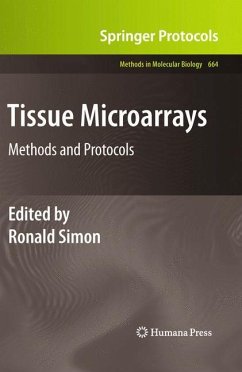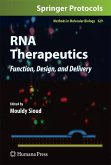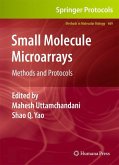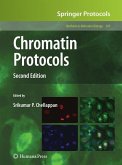The tissue microarray (TMA) method presents as a modern high technology, although its roots go back to the 80s when researchers frst started to combine several small pieces of tissues into so-called sausage blocks. In this respect, the TMA invention was not frstly characterized by technical improvements, but its true novelty was to link clinical data to the tissues that were combined on one slide. The very high number of tissues that can be included into one TMA, the small size and regular shape of the tissue spots, the preser- tion of integrity of the donor tissue blocks, and the highly organized array pattern that allows for reliable allocation of clinical data to individual tissue spots made it a discrete technique with unique features. When the TMA technology was developed 12 years ago, its beneft was controversially debated. While many researchers welcomed the method enthusiastically, there were c- cerns by others that results obtained from the small tissue cores used for TMA making would not be suffciently representative of the donor tissues. Meanwhile, the increasing use of this technology has imposingly demonstrated its tremendous utility in research. In fact, basically all clinically relevant associations between molecular markers and clinical endpoints could be reproduced using only one single 0. 6 mm core per tissue sample so that TMAs have nowadays become a standard tool allowing for a new dimension of tissue analysis.
From the reviews:
"This book is the first ... to attempt to summarise the field of Tissue Microarrays (TMAs) since the first report of the technology in 1998. ... relevant to the clinician-scientist who may be considering high-throughput analyses of genes and proteins from a large cohort. ... In summary, this book is crammed with incredibly detailed technical advice ... and even advice on whether to drill or cut the recipient paraffin blocks. ... very readable, very informative and an excellent introduction to the gentle art of TMAs." (Cris dos Remedios and Sean Lal, Proteomics, Vol. 11, 2011)
"This book is the first ... to attempt to summarise the field of Tissue Microarrays (TMAs) since the first report of the technology in 1998. ... relevant to the clinician-scientist who may be considering high-throughput analyses of genes and proteins from a large cohort. ... In summary, this book is crammed with incredibly detailed technical advice ... and even advice on whether to drill or cut the recipient paraffin blocks. ... very readable, very informative and an excellent introduction to the gentle art of TMAs." (Cris dos Remedios and Sean Lal, Proteomics, Vol. 11, 2011)








